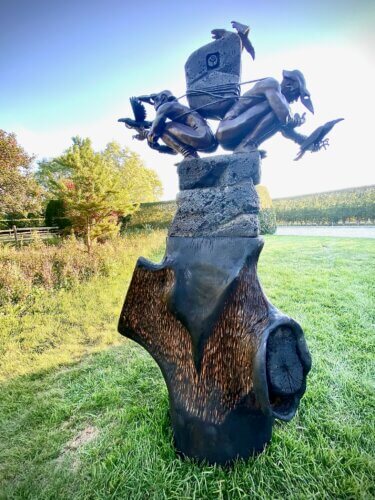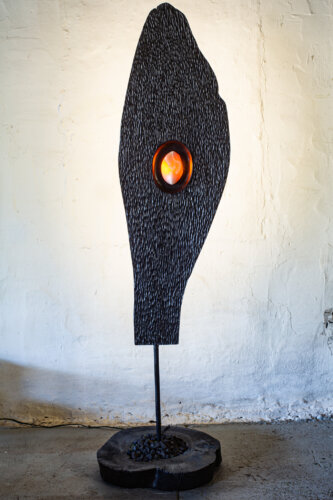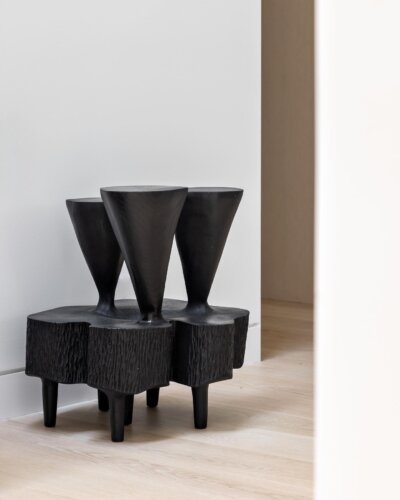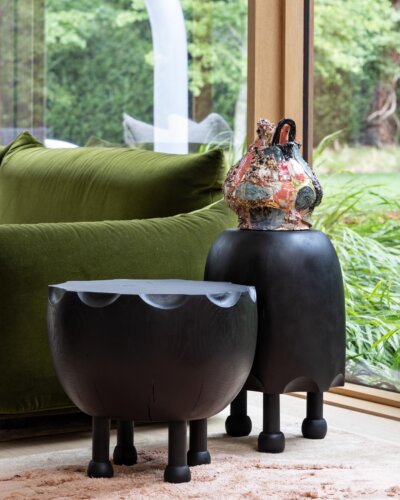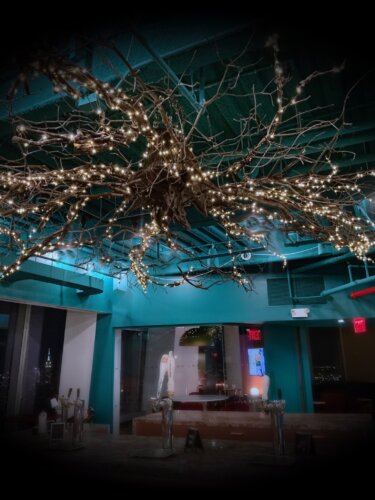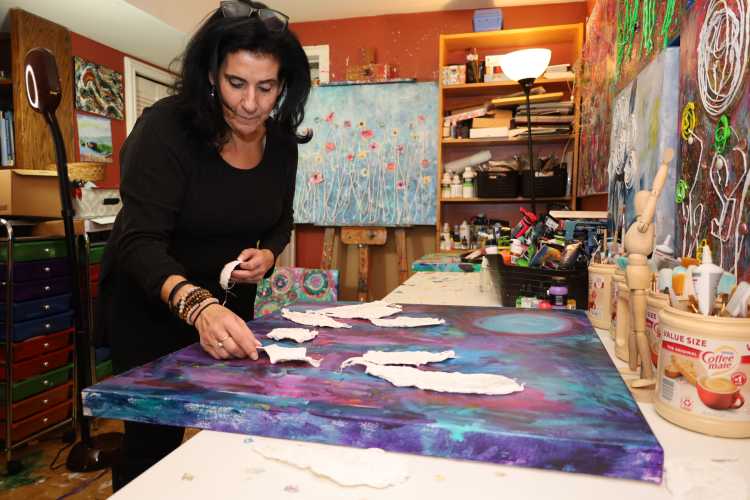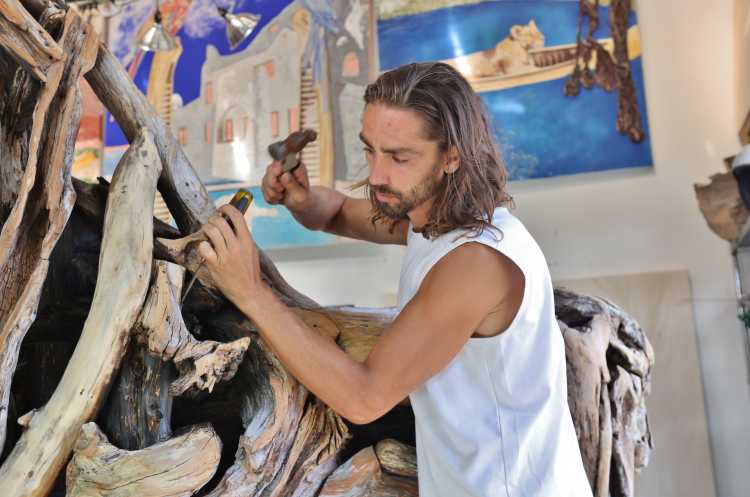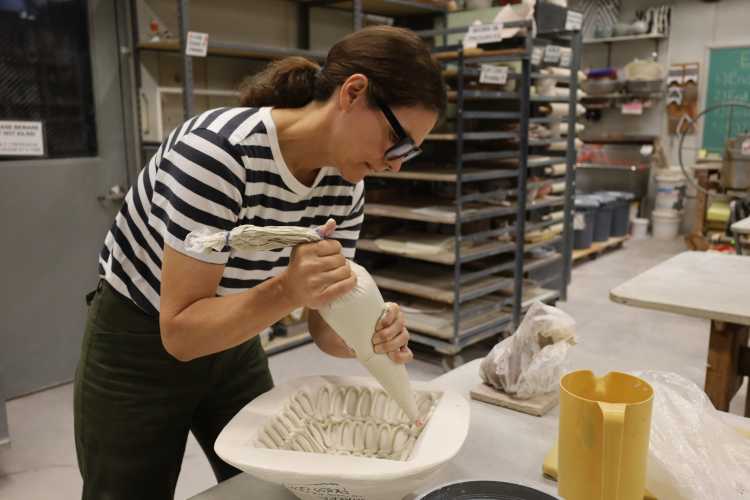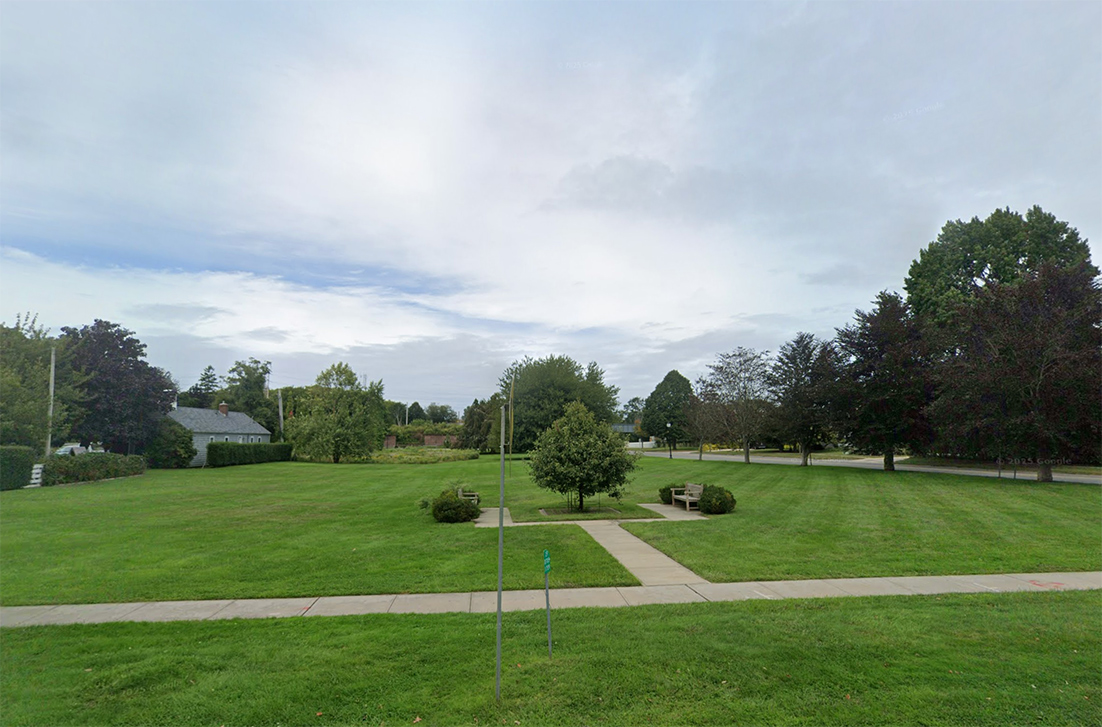Ian Love is one of those artists who look like their art. He’s solidly built, just like the furniture and sculpture he creates out of fallen trees. And he gives off an aura of woodsiness mixed with urban cool and a touch of playfulness — all of which are attributes that could easily describe his work.
A professional musician and songwriter for most of his adult life, Love turned to woodworking only about six years ago. Before carving out a place for himself in the art and design world, he was best known as the lead guitarist for the post-hardcore band, Rival Schools. In fact, when asked to name sources of inspiration for his work, Love cites legendary jazz trumpeter Miles Davis rather than fellow furniture designers or sculptors.
“I want to be Miles in 1970,” he says. “I want to be an experimental avant-garde furniture maker. There are a handful of people who inspire me and who I would love to be like. But I’m doing it my own way.”
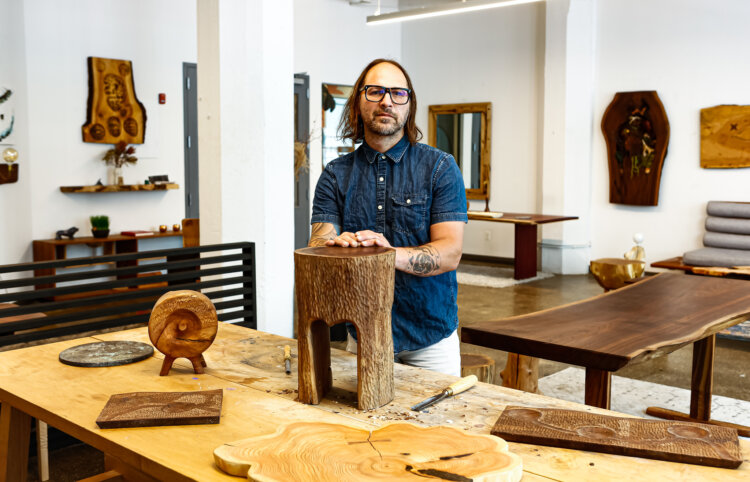
Doing it his own way has worked out very well so far. Though Love is about to turn 48, he’s a relative newbie in his field. But that hasn’t stopped him from amassing a steady stream of work from a growing network of designers and architects. His creations are also represented in studios in the Hamptons, New York City and Los Angeles, and he has scored several high-profile commissions, including a 27-foot walnut desk he built for Amazon Music’s offices in Williamsburg, Brooklyn. There’s also the 16-foot-diameter illuminated root system suspended from the ceiling of the 76th floor he installed in the Freedom Tower in lower Manhattan, a piece that looks like it could have been created by Louise Bourgeois in consultation with Peter Wohlleben, author of The Hidden Life of Trees.
While Love’s work sometimes brings other artists to mind, it feels entirely non-derivative and original. “One of the things I love about my quote-unquote ‘story’ is that I’m completely untrained,” he says. “And I think that helps me because I can come at it in a way that other people that do this can’t. I have to keep building and finding new voices and doing new things because I have to set myself apart.”
Many artists talk about being drawn to their work from an early age. In Love’s case, the opposite is true. While he’s been playing music since he was a child, he points out that he never had a particular affinity for woodwork. One partial explanation could be the fact that he’s a city kid, born and raised in Manhattan and Brooklyn, where there aren’t a lot of opportunities to find fallen maple or catalpa trees— and where chainsaws, routers and angle grinders aren’t usually a part of the typical urban family’s toolkit.

Eight years or so ago, Love was living in Brooklyn and benefitting from a lucrative career creating music for what he calls “bad reality TV shows.” While he was entering a sad and difficult chapter of his personal life, his professional life as a working artist began to take shape.
His mother, Rosemary, was diagnosed with cancer, and Love became her full-time caregiver for the two years leading up to her death. Because he had been turning down paid jobs while tending to his mother’s needs, his music work gradually dried up.
A couple of years before his mother’s diagnosis, he had purchased a vacation home on a woodsy lot in Hampton Bays, less than half a mile from the Peconic Bay. As he spent more time at his Hampton Bays home, a passion for woodwork began to reveal itself.
“I didn’t know anything about building anything,” he recalls. “But I got really obsessed with gardening and landscaping and everything that you do out here [on the East End]. That’s when I started getting my hands dirty.”
Love’s first creations were a pair of planters for his deck and a playhouse for his daughter. “Then I started making things and giving them away to friends,” he says. “It all started when this white oak tree came down on my property. I sliced it up into these slabs and made side tables.”
Soon after, Love created his first sculptural piece out of a cherry blossom tree, a piece he ultimately sold about a year and a half ago.
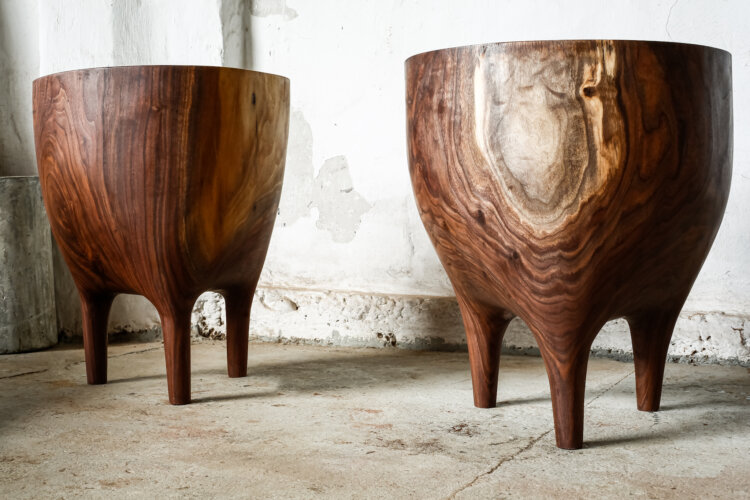
In the years after Love’s mother died, he had something of a professional and creative epiphany. He realized that his woodwork had become a way to channel her. He believes that creating art out of fallen trees not only pays homage to his mother, but also represents a way for her to be at least metaphorically cured of her cancer and reborn.
“When my mother died, I really felt like my ego had been decimated, because everything I thought I was was gone,” he says. “But a couple of years ago, I made this connection: I’m making things out of these trees that got taken down and were going to be thrown away. They’re all kind of tweaked and diseased, and I’m making them into something beautiful and giving them this new life. That’s when I realized that this is what I’m supposed to be doing.”
Three years ago, Love left his New York city roots behind and now lives full time in Hampton Bays. He closed his workspace in Brooklyn and works almost exclusively out of a cavernous studio/storage facility in Riverhead.
It’s a bit of shame that Love rarely sees clients at his Riverhead studio. The front of the place is a wild amalgam of handmade furniture, totems, sculpture and works in progress. Out back are the power tools of the trade, as well as slices and sections of trees large and small — a constantly rotating gallery of oak, maple, locust, sassafras, catalpa, elm, cedar, walnut and more.
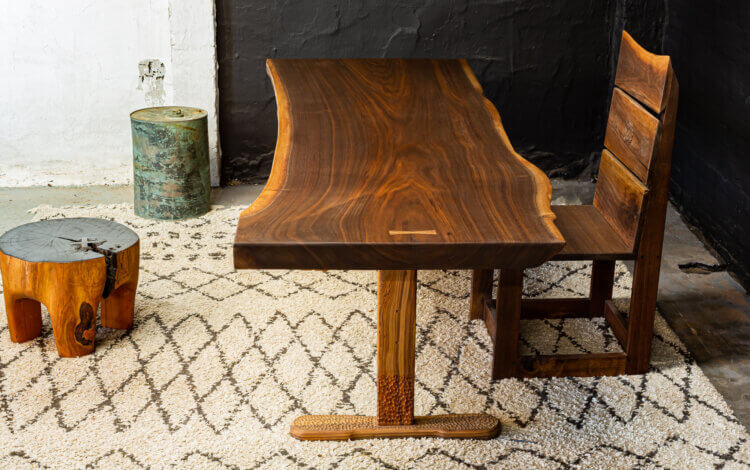
“Working with each piece, I get really in tune with it,” he explains. “I know what each species feels like and smells like and works like. Each piece of wood, not just the species, has its own personality.”
Love gets most of his wood from a fallen tree farm in Speonk. Though he sometimes gets materials from other sources, he never removes a living tree from its natural environment. To maximize sustainability, Love rigorously adheres to what he calls “The Singular Tree Concept.”
“I don’t cut down trees,” he stresses. “I work with trees that the arborist takes down. The Singular Tree means that I get the whole tree, I break it down and I use every aspect of it.”
From a commercial perspective, the Singular Tree Concept dovetails nicely with the market’s seemingly never-ending demand for sustainable furniture and art made from reclaimed wood.
But Loves points out that in his case, the art is also sustaining the artist.
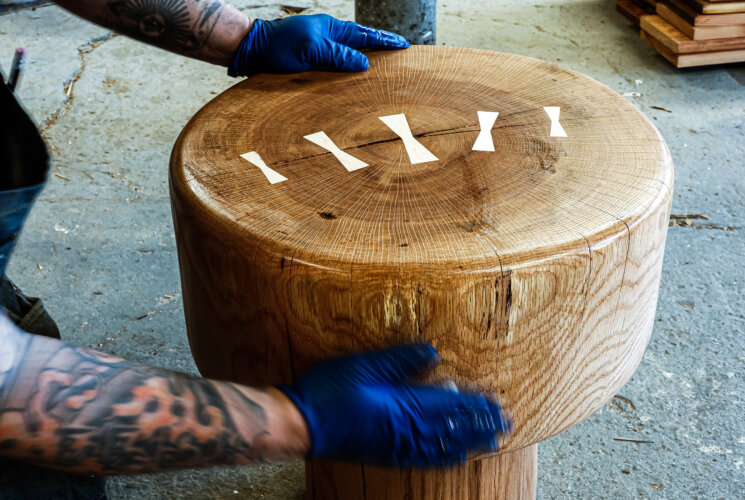
“People ask me if I’m using reclaimed wood,” Love says. “Well, the wood’s also reclaiming me. Sure, I’m reclaiming it and making it into this other thing. But the same process is going back the other way. It’s making me into a whole new thing.”
Love notes that over the course of his life, it’s been gratifying for him to be able to make a good living from both music and woodworking. And he sees some interesting differences between the two art forms.
“Music is great and I’ll always love it,” he says. “But it can be a little confining. It’s 12 notes. The greatest lyrics have been written. It’s all been done. But I really believe that when I’m working with a tree or a log, this thing is an organic material that was alive, had a long life and there’s history in there and there’s something in there that’s connecting me to it and it to me. There’s a synergy there. it becomes bigger than me. And that’s endless. That’s boundless.”
This article appeared in the July Fourth 2023 issue. To read the full digital version of the magazine, click here. For more articles from our various magazines, click here.
